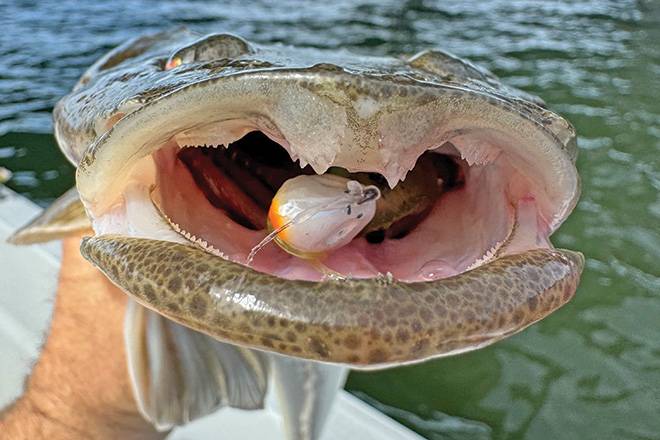Flathead are one of the most sought-after species among Australian anglers. These ambush predators are known for their aggressive strikes, making them exciting to catch. Found in estuaries, sandy flats, and tidal rivers, flathead are accessible to both beginner and experienced anglers.
While catching flathead can be simple, refining your techniques can greatly increase your success. In this guide, we’ll cover advanced fishing tactics, the best lures and setups, and key seasonal factors to help you land more flathead.
Where to Find Flathead in Australia
Flathead thrive in various environments, but they prefer sandy or muddy bottoms where they can ambush prey. The best locations include:
•Estuaries and river mouths – Flathead often position themselves along drop-offs, waiting for baitfish.
•Shallow sand flats – On a rising tide, flathead move onto the flats to feed.
•Tidal channels and drains – Strong currents bring baitfish, attracting hungry flathead.
•Rocky and weedy edges – Though they prefer sand, flathead sometimes sit near structure to ambush prey.
Tip: Look for small baitfish schools or prawns jumping from the water—this often signals a feeding flathead nearby.
Best Lures and Rigs for Flathead
1. Soft Plastics (Most Effective Choice)
Soft plastics are a go-to option for catching flathead due to their lifelike action. Popular choices include:
•3–5 inch paddle-tail soft plastics (e.g., Z-Man, Berkley PowerBait)
•Curly tail grubs for slower presentations
•Jerk shads for a more erratic, baitfish-like movement
Rigging Tip: Use a 1/4 oz to 3/8 oz jig head with a 2/0–4/0 hook. Heavier jig heads help maintain bottom contact.
2. Hardbody Lures and Vibes
Flathead aggressively strike small baitfish, making hardbody lures a deadly choice.
•Shallow-diving minnows (5–10 cm) are effective for working sand flats.
•Vibration lures (vibes) work well in deeper channels and around structure.
•Surface lures (walk-the-dog style) can attract explosive strikes in shallow waters.
Retrieve Technique: A slow rolling retrieve with occasional twitches mimics an injured baitfish, triggering flathead to strike.
3. Blades and Metal Spoons
In deeper water, metal blades and spoons can help locate actively feeding fish.
•Vibrating blades in 1/4 oz to 1/2 oz weights are effective for covering large areas.
•Metal spoons work well when casting into deeper channels.
Tactics for Catching Flathead
1. Drifting with the Current (Boat & Kayak Fishing)
Drifting allows you to cover more ground and present your lure naturally.
•Cast ahead of the drift and slowly hop the lure along the bottom.
•Maintain contact with the bottom—flathead rarely chase lures in midwater.
•Use a Favorite X1 7’2” spinning rod for optimal lure control and casting range.
2. Working the Tides (Shore & Wading Fishing)
Flathead feed most actively on a rising tide when baitfish move into the shallows.
•Target sandbanks and drop-offs as water levels rise.
•Cast soft plastics upcurrent and retrieve them with a slow hopping motion.
•Use a Favorite U1 7’0” fast-action rod for better hook-setting power.
3. Slow Jigging for Deeper Flathead
Flathead hold deeper in colder months. To target them:
•Use a vibe or blade lure and let it sink to the bottom.
•Employ a lift-and-drop retrieve to keep the lure in the strike zone.
•Keep the line tight to detect subtle bites.
Seasonal Factors and Weather Conditions
Best Time to Fish for Flathead
Flathead can be caught year-round, but certain seasons offer better results:
•Spring & Summer – Peak feeding activity as water temperatures rise.
•Autumn – Good action in estuaries before winter slowdowns.
•Winter – Fish move to deeper waters, requiring slower presentations.
Weather Considerations
•Overcast days often produce better bites than bright, sunny conditions.
•A slight breeze helps break up the water’s surface, making flathead less wary.
•Fish tend to be more aggressive before a storm but slow down after a major weather front.
Choosing the Right Gear for Flathead Fishing
Rod & Reel Setup
For maximum performance, choose a rod that balances sensitivity and power:
🎣 Favorite X1 7’2” Medium Light (Fast Action) – Best for soft plastics and hardbodies
🎣 Favorite U1 7’0” Medium (Fast Action) – Ideal for larger flathead and heavy jig heads
Pair your rod with:
•2500–3000 size spinning reel (Daiwa, Shimano, or equivalent)
•10–15 lb braided line for strength and casting distance
•10–20 lb fluorocarbon leader to handle flathead’s sharp teeth
Final Thoughts: Master Flathead Fishing with the Right Techniques
Flathead are an exciting and rewarding species to target in Australian waters. By understanding their behavior, using the right lures, and refining your techniques, you’ll significantly improve your catch rate.
🚀 Upgrade your fishing setup today with Favorite rods!
🎣 Check out the best spinning rods for flathead fishing: Favorite24.au
